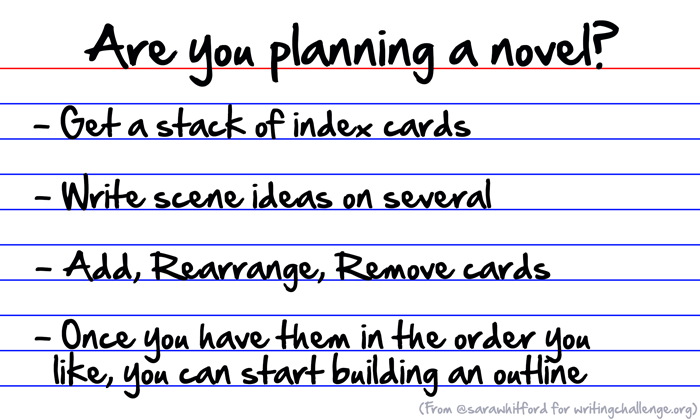
This little gem of an idea is pretty self-explanatory. I’d never thought to try it before, always opting to scribble a few notes in a composition book, then start writing in Microsoft Word. (Those days are over. I’m in love with Scrivener now, but that gets covered in another tip. 😉 ) When I started working on The Smuggler’s Gambit, however, I was starting from scratch.
I had recently bought Nail Your Novel: Draft, fix & finish with confidence by Roz Morris and borrowed a couple of ideas from that.
Morris suggests ‘The Hat Game’ when trying to come up with ideas for a story:
I get a box or a tin and I make a note on a separate piece of paper and throw it in the box. … These ideas may be anything, big or small. A major plot twist; a type of character; the smell of gasoline at a car smash. A chase through the Paris Metro on rollerskates. A treehouse in the Serengeti for a romantic scene — or, more surprising, a break-up….
Anything I come across with story potential, I scribble down and chuck in the box.”
A couple of pages later, she talks about organizing those random, scribbled ideas into a story form using cards or spreadsheets:
I use index cards or Post-Its for this, and spread them out on the dining table or the lounge rug…
Take your stack of cards and a marker pen, and sift through all those little bits of paper [from the previous step], writing each event or development on a card.
It’s important that you use a big marker pen and small cards. That way, you can only fit a few words on the card – which focuses the mind wonderfully….
The cards allow you to play ‘what if’. Put it in and see if you like the consequences that follow, the way it will push the story. Details are for later.”
Then you can swap cards in or out, add in new cards (scenes), remove others, and generally shuffle things until you have a plot progression that seems natural.
I have now adopted this very technique in planning the key plot points of my novels. Those other scraps of paper — the non-event cards, like character sketches, settings — those just become the details that bring the events to life. They don’t end up in the index card timeline, but they will end up in your story notes.
Once I had all of my index cards sorted in a logical order for The Smuggler’s Gambit, I soon realized I had more than enough scenes for my book. In fact, I had the makings of a series.
At that point, I was ready to begin building my outline, which I initially did on a couple of pages in a composition book, then started fleshing the outline out further in Scrivener.
How do you organize your scene ideas while planning a new writing project?
I’d love to read your comments below. 🙂
